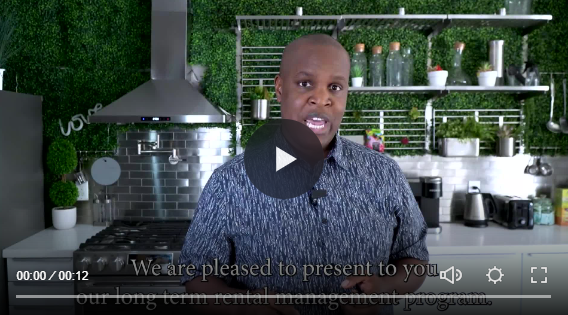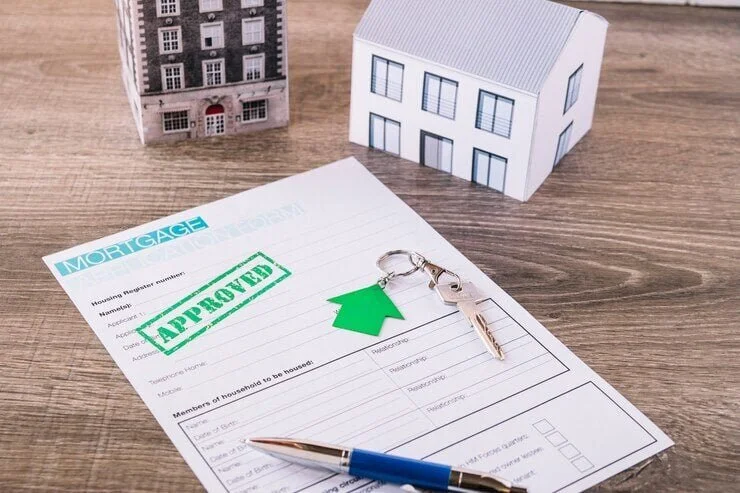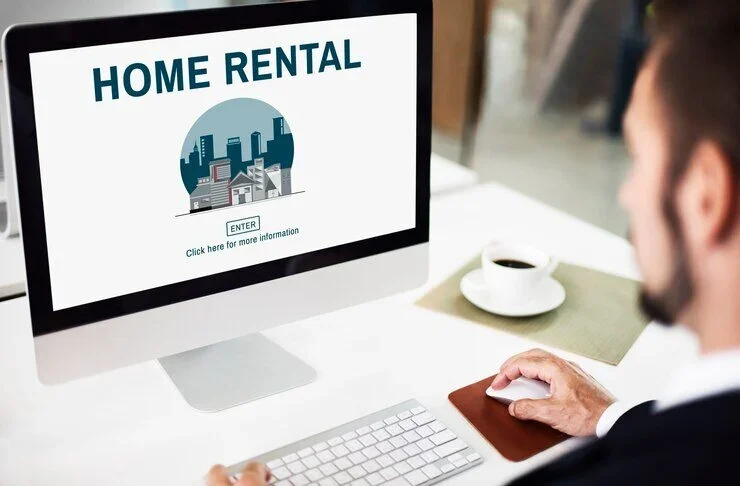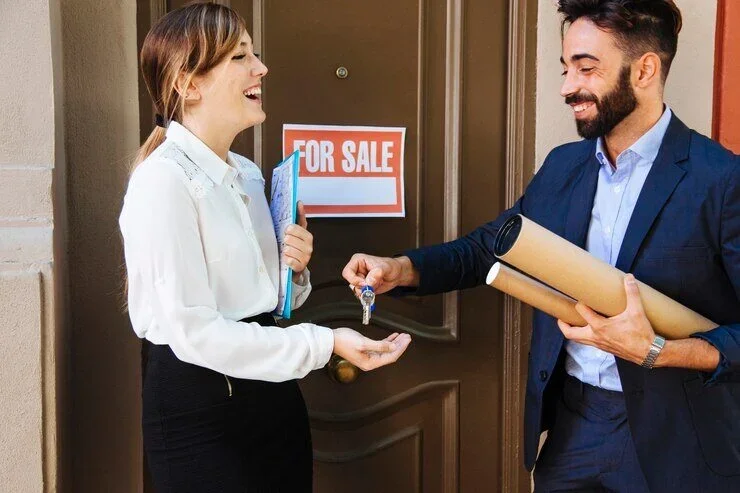
Las Vegas, NV Long-Term
Rental Management
Experience hassle-free long-term rental management in Las Vegas, NV. Our expert team handles everything from
tenant screening to maintenance, ensuring your property is well-managed and profitable all year round.
Understand Our Transparent
Pricing Structure Today
Explore our clear and straightforward pricing structure designed to provide value without hidden fees.
We believe in transparency, ensuring you know exactly what to expect in your billing.
Monthly Management
Fee | 10%
$149 Minimum monthly
management fee.
Utility Convenience Fee for Vacant Properties | $149.00/Vacancy*
Owner can put utilities in their own name during vacancies and this is waived.
One-Time New Owner Account Setup | $395.00
for all new management accounts.
Professional Photography and/or 3D Matterport Tours | Photographer’s Price
A 3D tour can help with renting a property before it’s been vacated by prior tenant. Professional photos can be used for multiple vacancies normally 1 set of photos is fine for 5-10 years.
Leasing Fee | 3%
of Annual Rent
for procuring every new tenant. This includes the Showing Agent Commission paid to external or internal agents who show Rentals ($350-500). Leasing fee is waived when owner procures their own tenant.
Lease Renewal Negotiation | 1% of Annual Rent
for negotiating a lease extension. Paid each time a new lease is negotiated. We aim to increase rents where reasonable and per market conditions.
99 Things Your Property
Management Does For You
-
1. Conduct an initial consultation with the property owner: The first step is to conduct an initial consultation with the property owner to discuss their needs and expectations.
2. Make necessary improvements: Conduct any necessary repairs, upgrades, or renovations to the property to make it more attractive to potential tenants.
3. Develop a marketing plan: Develop a comprehensive marketing plan that outlines the various channels and tactics you will use to promote the property.
4. Take professional photos: Use professional photography to showcase the property's best features and ensure that the images are high-quality and visually appealing.
5. Write compelling property descriptions: Write detailed and compelling descriptions of the property that highlight its unique features and benefits.
6. Advertise on listing sites: Use popular rental listing sites such as Zillow, Trulia, and Apartments.com to advertise the property to a wide audience.
7. Leverage social media: Promote the rental property through social media platforms such as Facebook, Instagram, and Twitter to reach a larger audience.
8. Provide a 24/7, 365 days a year tenant communication line
9. Provide an owner hotline for text and call communication directly to the team
10. Provide 5-Star client care, including quick response times to all client communication
11. Work with home warranty companies (when owner has one in place) to try and mitigate costs.
12. Hire and oversee landscapers (when applicable)
13. Hire and oversee pool vendors (when applicable)
14. Coordinate cosmetic repairs or improvements to the property at owner’s request. *
15. Hire a professional photographer for initial marketing and again after any cosmetic renovations
16. At owner request, coordinate and help owner HOA Architectural Review requests (including acquiring neighbor signatures)*
17. Annual interior inspection of the property to check condition, compliance and deferred maintenance issues.
18. Dispatch for annual HVAC system checks
19. One-time professional video “showing tour” of your property
-
20. Negotiate lease extensions with tenants
21. Market research to determine when it is appropriate to recommend a rent increase to the owner
22. Complete lease extension addendum signed by all parties
-
23. Update the owner on any pending vacancies
24. Provide tenant a move-out letter prior to vacancy
25. Consult with tenant on how to leave the property with the goal of a return of their security deposit
26. At owner request, establish utilities during vacancy period *
27. Conduct a move-out walkthrough to deter disputes over security deposit and protect the owner
28. Prepare a thorough move-out inspection report
29. Review the move-in report for the outgoing tenant and compare to determine eligibility for security deposit refund
30. Dispatch vendors for move-out repairs
31. Property manager to submit a Cosmetic Review noting any long term updating that may be needed to maintain top rent, and advise the owner
32. Procure estimates for any cosmetic updates needed
33. Complete security deposit accounting promptly in accordance with state law
34. Process any security deposit refund due to the tenant
35. Update photos or marketing as needed only
36. List property for rent on all channels
37. Setup showing agents for showing of the property
38. Handle rental leads and inquiries
39. Send new tenant a copy of the HOA rules, regulations and CC&Rs
40. Hold regular meetings with the landlord to discuss property performance and strategy
-
42. Collect and review rental applications: Check for any incomplete or inaccurate information.
43. Run a credit check: A credit check is important to ensure that the applicant has good credit history and can afford to pay the rent on time.
44. Verify employment and income: It's important to verify the applicant's employment and income to confirm that they can afford to pay the rent.
45. Check references: Contact the applicant's previous landlords and references to gather information about their past rental history, behavior, and reliability.
46. Review any pet or smoking policies: If the applicant has pets or smokes, review any specific policies related to these issues and ensure that they are willing to comply with them.
47. Determine eligibility: Based on the information gathered, determine whether the applicant meets the eligibility criteria for the rental property.
48. Process incoming rental applications
49. Consult with owner on rental applications
50. Advise accepted applicant and onboard as new tenants
51. Conduct a move-in walk through to prepare a thorough record for when tenant vacates
52. Key release to new tenant
53. Process tenant move-in report and any requests upon move-in that may require attention
54. Send copy of the lease to the HOA / Common Interest Community
55. Provide a lease agreement: If the applicant is approved, provide them with a lease agreement that outlines the terms and conditions of the rental.
56. Collect security deposit and first month's rent: Before the tenant moves in, collect a security deposit and the first month's rent.
57. Sign the lease: Once all necessary documentation has been reviewed, signed, and processed, sign the lease agreement and officially approve the rental applicant.
58. Send legally required adverse action letters to declined applications
59. Ensure Fair Housing Laws are followed to keep all parties out of trouble
-
60. Collect rent
61. Collect and account for security deposits
62. Safeguard deposits in broker trust account
63. Direct deposit (for free) rent funds to owner account
64. Keep good records of all invoices, receipts and signed contracts for the property
65. Pay trash bills at owners request
66. Pay HOA Dues at owners request
67. Pay sewer bills at owners request
68. Pay property taxes at owners request
69. Pay insurance bills at owners request
70. Pay any landscape and pool bills on owner behalf
71. Send monies owed by tenant to collections agency
72. Onboard new vendors as needed, and verify insurance and licensing (where applicable)
-
73. Respond to tenant repair requests
74. Enforce the tenant repair deductible terms in the lease agreement
75. Dispatch vendors for repair items
76. Procure estimates for larger repair items
77. Get owner approval for repairs exceeding $200
78. Work with owners’ insurance company for insurable expenses*
79. Annual update/survey on bills and accounting to ensure accuracy
80. Provide monthly accounting on any expenses or invoices
-
81. Send a reminder notice: Send a friendly reminder notice to the tenant as soon as their rent payment is late. Sometimes tenants simply forget to pay and a simple reminder can be enough to prompt payment.
82. Follow up with a phone call: After sending a reminder notice, follow up with a phone call to discuss the situation with the tenant and find out when they plan to make the payment.
83. Assess any late fees: Review the lease agreement to determine if late fees should be assessed and apply them accordingly.
84. Determine the reason for the late payment: Ask the tenant why their payment is late and see if there are underlying issues that need to be addressed, such as financial difficulties or personal problems.
85. Offer a payment plan if appropriate and owner approves, if there is a short term problem. This is in rare circumstances
86. Serve a notice to quit: If the tenant fails to pay their rent and does not respond to your attempts to contact them, serve them with a notice to quit according to state laws.
87. File for eviction: If the tenant continues to refuse to pay or comply with their lease agreement, file for eviction through the court system.
88. Calculate any damages owed: If the tenant leaves the property before paying their full rent or damages are caused to the property.
89. Escalate as permitted by state law to collect rent in a timely fashion
90. Oversee and complete eviction when necessary
91. Consult with owner and owner’s attorney if needed on eviction processes
92. For bounced checks, enforce certified funds policy for the tenant
93. Initiate additional inspections when tenants become delinquent or other red flags arise
-
94. Provide tenant education and training on proper property use and maintenance
95. Develop and implement policies and procedures for tenant compliance
96. Proactively monitor rental market trends and make recommendations accordingly
97. Stay apprised on changing tenant laws at the state and federal (Fair Housing) level to stay out of trouble
98. Attend continuing education to learn new skills and technologies to be more affective
99. Watch for and adjust to trends in the market including economic upheaval and emergencies that may require change of strategy in dealing with tenants
Schedule a Consultation ☟
Property Management FAQs
-
Cunningham Group is affiliated with the premier RE/MAX name. We strive to adhere to the highest standards of ethics and professionalism that come along with the RE/MAX brand. Our company manages homes in every area of the Las Vegas valley. Through communicating the truth to our clients and aggressively marketing our rental listings, we’re proud to say that we rent the typical property on average within weeks, not months. Our belief is that everyday a rental sits vacant, the owner of the home is losing cash. That’s the mentality we work from and that’s how we keep our clients’ rentals occupied with great tenants.
-
Some homeowners confuse First & Last Month’s rent with a “Security Deposit”. Laws that govern the use of rents vary substantially from those that involve security deposits. Our company requires all our tenants to remit an amount of money equal to one month’s rent (at least) in addition to their first month’s rent before they can move in. This additional money is called a security deposit. The deposit is held in a brokerage trust account and can’t be touched unless the tenant vacates the property. The security deposit is then 100% refundable minus any expenses that are incurred to restore the property to the condition it was in when the tenant moved in.
The benefit of taking a reasonable security deposit is that the money acts as leverage for a tenant to leave the property in great condition when they move out. If we were to take First & Last Month’s “Rent”, that money would never be returned to the tenant and thus would not provide any real security for the owner as the tenant has no real motivation to leave the property in good condition.
-
We can deduct any costs related to restoring the property to its previous condition from a tenant security. Tenants fill out a pre-occupancy inspection report that absolves them of any issues that were in existence before they move in. This signed report is kept on file until the tenant vacates the home. Examples of things that can be paid from security are:
General cleaning
Carpet cleaning
Repairs of items that were not broken when the tenant moved in
Unpaid utilities that were supposed to be maintained by the tenant but were not
Landscaping repairs
Painting
And more
-
We charge a security deposit that is equal to 1 month’s rent. In some circumstances, we may elect to require a deposit of two to three times one month’s rent. This would only happen if we can’t verify a strong credit history and residence history for a prospective tenant.
-
How much rent you can get depends on the size of your home, the community it’s in, and any upgrades to the property. To get a free rent comparable analysis, please visit our Contact Form to provide the necessary information.
You will want to send us the full address of the property you plan to rent out. The comparable is done free of charge and there is no obligation to utilize our property management services if you don’t wish to.
-
Rent is due immediately upon lease signing. One month’s rent is required to move-in.
-
We offer direct deposit of your rent check directly into your bank account via electronic check. We do not mail checks (unless you are a self-directed IRA client). We can do this to any US-based bank with a 9-digit routing number. Out of state accounts are perfectly fine.
-
There are several things to remember when you are trying to market your rental property:
The important thing is that the home is “clutter free” and extremely clean. Prospective tenants are most attracted to clean homes when they are walking through them. They need to be able to see your home as a place “they” could call home.
Paint your home in neutral colors. If not white, then any beige or light cream color would work. We recommend strongly that you avoid green, blues, or other more custom colors; especially dark colors.
Fix anything that is broken: If we turn over a clean, operational and maintained home to a tenant, it is much easier to hold them accountable for returning it back that way.
Install landscaping: If your property is dirt and barren in the backyard, we highly recommend that you “at least” pour some rock down to make the yard more appealing. Additionally, having a patio back there adds a great amount of value to your home and will get it rented faster. Homes can still rent without anything in the backyard, but it will hurt the rent you can get and the speed in which you could get it.
Have appliances available: The vast majority of potential tenants do not have their own refrigerator, washer/dryer, stove, or dishwasher. These items are covered under the security deposit if damaged and the tenants will have to maintain them if you leave them in the home.
-
The criteria that we use to qualify prospective tenants is a “tiered” system. The higher the credit score, the easier it is to qualify. Verifiable rental history, co-applicant qualification, and income verification can all be used to qualify a tenant.
Applicants who have been evicted in the past are automatically disqualified. Evictions typically show up on credit reports
All applicants MUST submit a Greater Las Vegas Board of Realtors rental application. We conduct our own credit check in all circumstances.
If a tenant cannot qualify under our normal qualification procedures, additional security deposits (up to triple the normal amount) may be requested to qualify a tenant.
-
Lease periods are typically one year or longer. Additionally, we prefer not to end leases between November 1 and January 31, except in special circumstances or when absolutely necessary. This is because of the difficulty of filling vacancies during the holiday season.
-
There are a lot of horror stories about pets destroying homes. In our opinion, the damage a pet can do to a rental is far more indicative of the quality of the tenant we find and NOT the pet. A great tenant will keep the house in great condition, regardless of the existence of a pet. It’s our job to find the great tenants so that you don’t have to worry about either pet or their owner. Additionally, we charge anywhere from $350 or more in additional security deposit to allow pets in rental properties. We also limit dangerous breeds or large pets unless we get owner approval. Also, you should remember that more than 2/3 of potential tenants have or will have a pet at some point. Turning down applicants with pets can significantly increase the amount of time your property sits on the market.
-
Selling your house is always possible, with or without a tenant in it. It’s important to remember that the lease agreement you have with your tenant supercedes anything else. This means that unless you wait for a lease to end, you’d have to sell your home to an investor. When you do this, you “sell” the lease right along with the home. There are plenty of investors looking for homes that they will end up renting out anyway. Otherwise, you can sell your home once any given lease period ends by giving the tenant a 30 day notice to vacate. Contact our office if you need assistance with listing and selling your home.
-
Our agreements last for at least one year. After a year, they automatically renew until cancelled.
-
Simply fill out this form and a Cunningham Group representative will contact you quickly to setup a free consultation. Or email kyle@cgvegas.com The property manager will then provide you with the management contract for review and signature.
kyle@cgvegas.comYou will need the signed contract, 3 keys, mailbox keys (if applicable), two garage remotes, and the setup fee is $495. If preferred, you may also give us a call directly at (702) 895-777.
We look forward to speaking with you!







